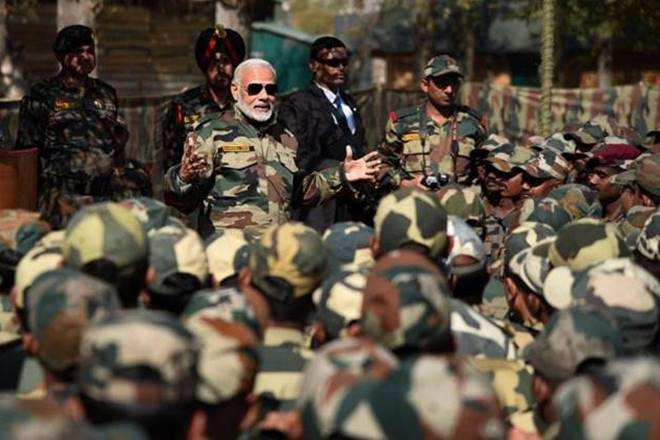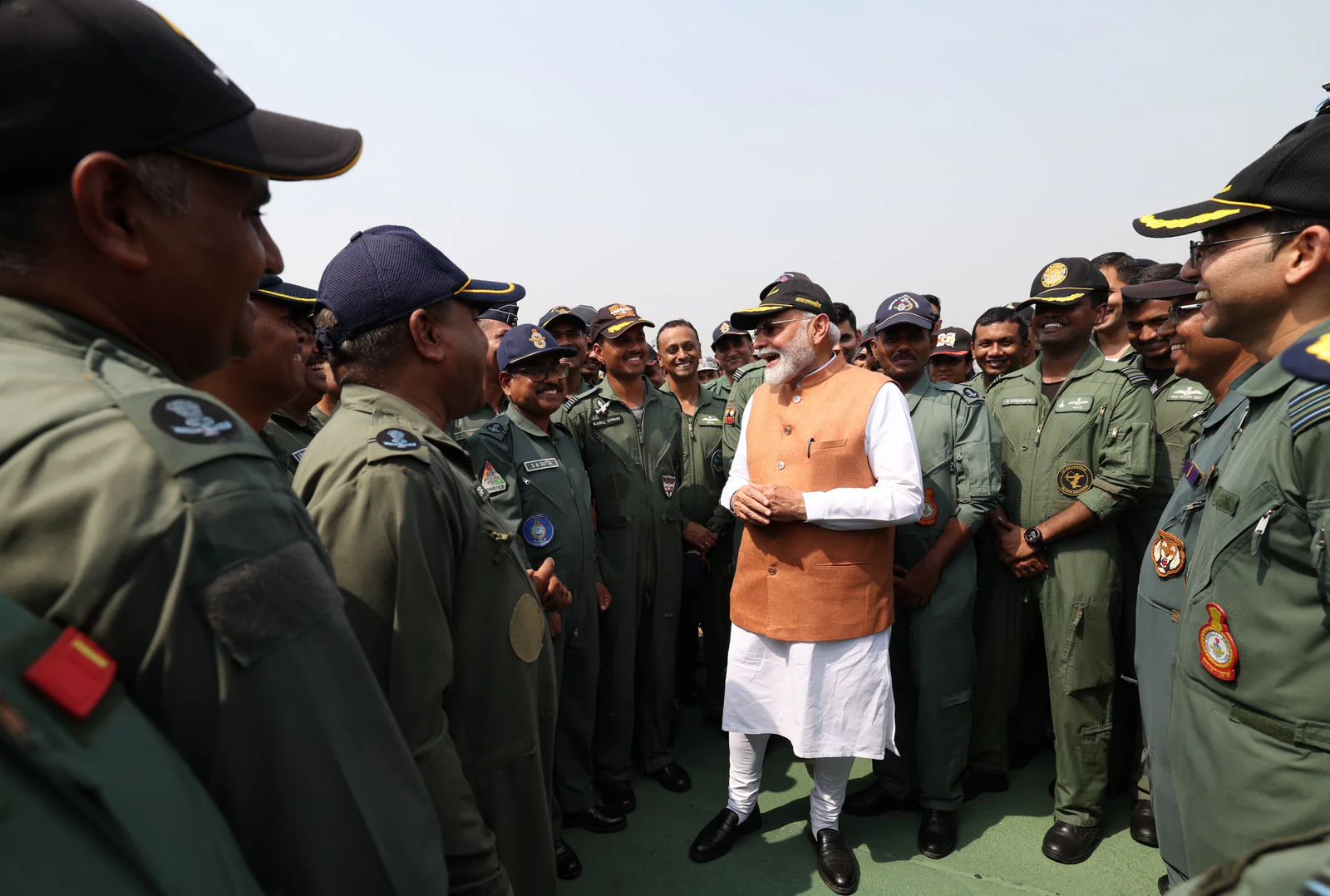
Prime Minister Narendra Modi’s visit to the Adampur Airbase, one of the strategic military installations in India, was not only a crucial event for national defense but also an emblematic moment in the country’s ongoing efforts to maintain security, build military readiness, and bolster morale among the armed forces. Set against the backdrop of rising tensions in the region, the Prime Minister’s visit carried substantial political, military, and symbolic importance.
The Adampur Airbase, located in Punjab in northern India, is one of the most critical airbases for the Indian Air Force (IAF). It plays a vital role in safeguarding India’s northern borders, particularly those adjacent to Pakistan, which are often considered some of the most sensitive in the world. By visiting this airbase, PM Modi made a powerful statement about his government’s dedication to ensuring that India’s military forces remain capable, well-equipped, and prepared for any situation.
The Strategic Importance of Adampur Airbase
Adampur Airbase is strategically located in close proximity to India’s volatile northern borders, which is a critical point for military operations and defense readiness. This airbase, among several others in India, helps maintain air superiority over the region and serves as a rapid-response hub in times of crisis. The base is equipped with a range of cutting-edge military assets, including fighter jets, surveillance equipment, and operational command centers. These features make Adampur a key asset in India’s defense infrastructure.
The base also serves as a launch point for multiple types of defense operations. These operations not only focus on ensuring air superiority but also aim at preventing incursions or any form of aerial threat from neighboring countries. With its strategic location, Adampur plays an instrumental role in India’s ability to project power and defend its sovereignty. Furthermore, it is one of the military’s critical points for joint operations, which also include coordination with ground forces, intelligence services, and other defense branches.
Given these circumstances, PM Modi’s decision to visit Adampur was a direct reflection of the strategic importance the Indian government places on such installations. It was not just about showcasing the technological might of the Indian Armed Forces but also reaffirming the government’s commitment to strengthening military capabilities and readiness across the board.
The Role of Indian Air Force in National Security
The Indian Air Force (IAF) is one of the largest air forces in the world and plays an essential role in maintaining national security. Its involvement in defending the nation’s borders, carrying out surveillance, and being at the forefront of air combat makes it a cornerstone of India’s defense strategy. The IAF is integral in deterring any hostile intentions and ensuring that the nation remains prepared to tackle emerging security challenges, whether it be traditional warfare, counter-insurgency operations, or rapid-response to natural disasters.
The IAF’s ability to deploy advanced fighter jets like the Sukhoi Su-30MKI, the Mirage 2000, and the Rafale jets, among others, has placed India among the top military powers in the world. The technological capabilities of these aircraft, combined with their operational readiness, ensure that India can assert its air dominance and respond effectively to any aerial threats. The IAF’s role extends beyond defense; it is also essential in reconnaissance, intelligence gathering, and maintaining an overall military deterrent on India’s borders.
Prime Minister Modi’s visit to Adampur Airbase was a testament to the government’s recognition of the vital role the IAF plays in ensuring national security. The visit also emphasized the importance of continually upgrading the capabilities of the air force to meet the challenges of modern warfare, including air defense, cyber warfare, and technological integration.
A Symbolic Gesture of Solidarity with Armed Forces
The visit by Prime Minister Modi to Adampur Airbase was not just about the operational readiness of the airbase; it was a highly symbolic gesture aimed at boosting the morale of the armed forces personnel stationed there. India’s soldiers, airmen, and sailors work under extremely challenging conditions, often far from home and family. In regions like Adampur, where security is always on high alert, the presence of leadership plays an important role in ensuring the personnel remain motivated, confident, and steadfast in their duties.
During his visit, Modi made it a point to interact with the soldiers stationed at the airbase. He took the time to shake hands, exchange words of encouragement, and express his deep appreciation for their service. This direct interaction helped forge a deeper connection between the armed forces and the political leadership. Such personal engagements are rare and are often seen as an effective way of reaffirming the importance of the armed forces in the eyes of the government and the nation.
In his address, PM Modi reiterated the importance of national security, acknowledging the crucial role of every soldier and officer in defending India’s sovereignty. His visit was a clear signal to the soldiers that the government is committed to supporting them, whether it be through better equipment, advanced training, or enhanced welfare programs. The Prime Minister’s words were meant to reassure them that their sacrifices do not go unnoticed.
National Security in the Context of Geopolitical Tensions
India’s security environment is constantly evolving. As a country located at a crossroads between various geopolitical powers, it is subject to both regional and global security challenges. The visit to Adampur came at a time when the Indian government was dealing with complex security issues, including ongoing tensions with Pakistan, territorial disputes with China, and concerns over global terrorism. As such, the military’s role in safeguarding national interests and ensuring the country’s sovereignty has never been more crucial.
PM Modi’s visit highlighted the government’s balanced approach to national security, which emphasizes both diplomacy and military preparedness. While the government continues to pursue peaceful and diplomatic solutions to conflicts, it is equally committed to ensuring that India’s military is prepared to respond swiftly and effectively should the need arise. The Adampur visit, in this context, became a demonstration of strength, not just in terms of military might but also in terms of political leadership, strategic foresight, and national resolve.
India’s Shift Toward Self-Reliance in Defense
One of the most significant aspects of India’s defense strategy in recent years has been its shift toward self-reliance in military production. Under the “Make in India” initiative, the government has focused on fostering a robust domestic defense manufacturing industry. This approach aims to reduce India’s dependence on foreign arms suppliers, enhance indigenous defense technologies, and create a more self-sufficient military infrastructure.
The Adampur Airbase is an important example of this shift in strategy. The base houses some of the most advanced Indian-made aircraft and defense equipment, contributing to India’s defense self-sufficiency. The Indian Air Force, as well as the Army and Navy, have been increasingly focused on integrating homegrown technologies, ranging from fighter jets to drones, surveillance systems, and ground-based defense mechanisms.
Modi’s visit to the airbase served to emphasize this commitment to defense self-reliance. It was a clear message that India is no longer just a consumer of military technology but is becoming a manufacturer of cutting-edge defense systems that will allow it to stand shoulder to shoulder with global military powers.

Enhancing Civil-Military Relations
PM Modi’s visit to Adampur Airbase also had a significant impact on civil-military relations in India. Historically, the relationship between the military and the government has been one of mutual respect, but there is always room for improvement in fostering stronger ties between political leadership and military personnel. The visit was an opportunity for the Prime Minister to reinforce this relationship by showing that the government understands the challenges faced by the Armed Forces.
Civil-military relations in India have evolved over the years, but the personal engagement demonstrated by PM Modi in Adampur provided a unique opportunity to build stronger bonds between the civilian government and the military establishment. By showing that he values the work and sacrifices of soldiers, Modi reinforced the importance of a unified approach to national security, where both political and military leadership work together to safeguard the nation.
Future of India’s Defense Strategy
Looking ahead, India’s defense strategy will continue to evolve in response to the dynamic geopolitical landscape. The government’s focus on technological innovation, modernization of military assets, and strategic military diplomacy is likely to continue shaping the future of Indian defense policy. Adampur Airbase, with its strategic location and advanced infrastructure, will remain a key element in India’s defense strategy for years to come.
The Indian government is also expected to continue investing in defense alliances with strategic partners around the world. These partnerships, whether with the United States, Russia, or regional players in the Indo-Pacific, will be essential in enhancing India’s defense capabilities. The nation’s commitment to maintaining strong defense relationships, coupled with its focus on self-reliance, positions India as a rising power in global defense dynamics.
Conclusion: A Moment of Unity and Strength
Prime Minister Modi’s visit to the Adampur Airbase was a momentous occasion in the history of India’s defense and security landscape. It was a powerful reminder of the vital role played by the Armed Forces in safeguarding the country’s sovereignty and national interests. Through his words and actions, Modi not only boosted the morale of the troops stationed at Adampur but also reinforced the government’s commitment to ensuring that India remains strong, secure, and prepared for the challenges of the future.
The visit served as a reflection of India’s dual approach to national security—seeking peace through diplomacy while ensuring the military is always ready to defend the nation’s borders. It highlighted the government’s commitment to modernizing defense infrastructure, enhancing self-reliance, and strengthening India’s position as a global military power.
In the years to come, the strategic importance of locations like Adampur will only grow, and the commitment demonstrated by Prime Minister Modi during this visit will continue to resonate as India strives for a future defined by strength, unity, and security.

